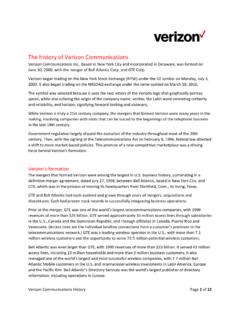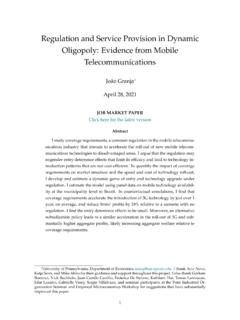Transcription of Accident Analysis Methods and Models
1 Accident Analysis Methods and Models a Systematic Literature Wienen, Bukhsh, E. Vriezekolk, Wieringa2017 06 04 AbstractAs part of our co-operation with the Telecommunication Agency of the Netherlands, we want toformulate an Accident Analysis method and model for use in incidents in telecommunications thatcause service unavailability. In order to not re-invent the wheel, we wanted to first get an overviewof all existing Accident Analysis Methods and Models to see if we could find an overarching methodand commonalities between Models . Furthermore, we wanted to find any Methods that had beenapplied to incidents in telecommunication networks or even been designed specifically for theseincidents. In this article, we present a systematic literature review of incident and accidentanalysis Methods across domains. We find that Accident Analysis Methods have experienced arise in attention over the last 15 years, leading to a plethora of Methods .
2 We discuss the threeclasses in which they are often categorized. We find that each class has its own advantagesand disadvantages: an Analysis using a sequential method may be easier to understand andcommunicate and quicker to execute, but may miss vital underlying causes that can later triggernew, similar accidents. An Analysis using an epidemiological method takes more time, but it alsofinds underlying causes the resolution of which may prevent accidents from happening in thefuture. Systemic Methods are appropriate for complex, tightly coupled systems and executingsuch a method takes a lot of time and resources, rendering it very expensive. This will often notbe justified by the costs of the Accident (especially in telecommunications networks) and it willtherefore be too expensive to be employed in regular were not able to find any published definitions of structured Methods specific to telecommu -nications, nor did we find any applications of structured Methods specifically to Accident Analysis Methods .
3 Definitions .. Accidents .. Incidents .. Damage .. Methods and Models .. Entities of the Models .. Modeling Narrative .. Structure of this report .. Research Questions .. Approach .. Strategy and execution .. Overview of the selection process .. Step 1: Database selection .. Step 2: Article selection based on title and abstract .. Step 3: Article selection based on full text and references .. Step 4: Data extraction .. Introduction .. Descriptive statistics .. Domains in the corpus .. Articles per class and per year .. Qualitative Analysis .. Sequential Methods .. Epidemiological Methods .. Systemic Methods .. Conclusions .. Generic Accident Analysis Method .. 214 Discussions and Threats to validity.
4 Estimation of the size of the validity threat .. Answers to research questions .. Answers to research question 1 .. Answers to research question 2 .. Conclusions .. Future work .. 25A Query Results and overview of Accident Analysis Query Results .. Number of articles per journal .. Characteristics for 63 Methods .. Abbreviations .. References .. Reviewed papers .. 4331. IntroductionThe European Telecommunication AgencyEnisa(European Union Agency for Network and In-formation Security) publishes an annual report about significant outage incidents in the Europeanelectronic communications sector. The Telecommunications Agencies of the countries constitut-ing the EU have to report their local significant outage incidents toEnisa. In the Netherlands,this is the responsibility of the Dutch Telecommunication Agency (Agentschap Telecom,ag).
5 We have started a project in co-operation withag(theLincproject learning from incidents intelecommunications networks) in order to learn lessons from the incidents the telecommunicationoperators are obligated to report toag. These lessons can help telecommunication operators toimprove their operations and thereby prevent future incidents from happening. To facilitate thisprocess,agneed to know which information to gather from the telecommunication operators. Todetermine this, we want to formulate an Accident Analysis method and model for use in incidentsin telecommunications that cause service purpose of this report is to find the state of the art in Accident Analysis Methods as astarting point for formulating an Analysis method that can be applied to incidents and accidentsin telecommunication Accident Analysis methodsIn many domains (e.)
6 And Nuclear Energy), incident and Accident Analysis forms anintegral part of safety and innovation. Many researchers have analyzed incidents and accidentsto gain new insights into system errors and impact of these errors on the safety of the researchers used a rigorous framework to analyze these incidents, and sometimesthey did so without such a such a framework in place makes it easier to compare di erent incidents and accidentsand to draw conclusions about common elements in those Models . More generally, in order todraw lessons learned from incident and Accident analyses across domains, we review the state ofthe art of incident and Accident Analysis Methods . Our goal is to find commonalities across thesemethods, which should support drawing lessons learned across di erent domains. In addition,our goal is to identify strengths and weaknesses in the reviewed Methods , in order to define a newmethod based on the strong elements of the existing Methods .
7 The first application domain forthis new method would be telecommunications, as this is the domain we are primarily focused onas part of our current research, but it should be generic enough to be applicable to all domainsand useful for all practitioners of incident and Accident DefinitionsSo what constitutes an incident and what constitutes an Accident ? The literature uses multipledefinitions for these terms, while the telecommunications sector uses their own. Generally, thedi erence between the two is that an incident is a deviation from the standard that does not leadto losses, while an Accident is an incident that causes loss or harm. Incidents are often definedas a near- Accident . The termnear missesis also employed for AccidentsHere are some examples of definitions of the concept of Accident :4 Levesonan undesired and unplanned event that results in a loss (including loss of human life orinjury, property damage, environmental pollution, and so on).
8 [145, p. 467]Harms-Ringdahlan event that causes unintentional damage or injury. [83, p. 13]DOE Workbook Conducting Accident Investigationsan unwanted transfer of energy or an en-vironmental condition which, due to the absence or failure of barriers or controls, producesinjury to persons, damage to property, or reduction in process output. [260, p A-1]Doytchevan undesired event or sequence of events causing injury, ill-health or property damage[54]From these definitions, it follows that an Accident must at least be undesirable. The authors allagree on the fact that an Accident causes damage. This damage ranges from damage to property,reduction of production, to injury and death. Note that the definition given by the DOE makesexplicit use of entities of the model they use. That definition is therefore specific to their modeland not as generic (or model agnostic) as the other three.
9 Leveson adds the idea that an accidentmust be unplanned. The other definitions do not include this extra criterion. We feel that thisunexpected aspect is a valuable addition: a loss that is planned, is not accidental, even thoughit may be undesirable. In the remainder of this reportwe use a slightly more general version ofLeveson s definition of the concept of an Accident :An Accidentis an undesired and unplanned event that results in a loss, damage or IncidentsHere are some examples of the concept of anincident:Levesonan action that involves no loss (or only minor loss) but with potential for loss underdi erent circumstance [21]Harms-Ringdahl(or near- Accident ) is an event that almost causes unintentional damage or in-jury. [83, p. 36]DOE Workbook Conducting Accident Investigationsno definition availableDoytchevan unplanned, undesired event that hinders completion of a task and may cause injuryor other damage [54]Fukudaan event that has the possibility to cause an Accident but does not fortunately in actu-ality, or a slight abnormal event without a substantial obstacle or damage [66]Three out of these four definitions state that incidents do no or only minimal harm, but theycould have caused greater losses if the circumstances were di erent.
10 Doytchev does not limit theharm that can be caused by an incident, but ties an incident to a specific task that cannot becompleted due to the incident. This seems to be very specific to a model containing tasks andwe feel this is too restrictive. In the remainder of this report, we will use the following definitionof an incident:An Incidentis an undesired and unplanned event that did not result or only minimally resultedin a loss, damage or injury, due to favorable circumstances. Were the circumstances di erent,it could have developed into an an aside, we noted that in medicine, an incident does involve harm - as evidenced by thefollowing definitions:Critical IncidentAn incident resulting in serious harm (loss of life, limb, or vital organ) to thepatient, or the significant risk thereof [63]Clinical Incidentany event or circumstance which has actually, or could potentially, lead tounintended and/or unnecessary mental or physical harm to a patient.


